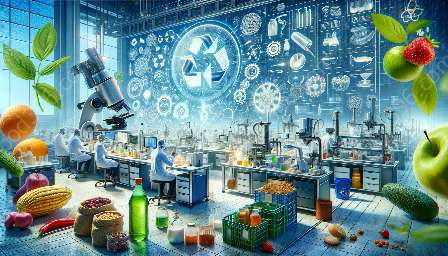Gluten intolerance and celiac disease are both conditions that involve adverse reactions to gluten, a protein commonly found in wheat, barley, and rye. They can cause various symptoms, ranging from mild discomfort to severe health issues. This article aims to explore the distinctions between the two, their impact, and their relationship to food allergy and intolerance, as well as the role of food science and technology in managing these conditions.
The Basics of Gluten Intolerance and Celiac Disease
Gluten Intolerance: Also known as non-celiac gluten sensitivity, gluten intolerance refers to a condition where individuals experience symptoms similar to those of celiac disease when consuming gluten-containing foods, despite not testing positive for celiac disease or a wheat allergy. Symptoms may include digestive issues, fatigue, and headaches.
Celiac Disease: Celiac disease is an autoimmune disorder characterized by an immune response to gluten ingestion. This reaction triggers inflammation and damage to the small intestine, leading to malabsorption of nutrients. Common symptoms include abdominal pain, bloating, diarrhea, and weight loss.
Diagnosis and Treatment
Diagnosing gluten intolerance and celiac disease involves different approaches. Gluten intolerance is diagnosed through a process of exclusion, where other conditions are ruled out before confirming sensitivity to gluten. Celiac disease is typically diagnosed through blood tests and intestinal biopsies to determine the presence of specific antibodies and intestinal damage.
The cornerstone of treatment for both conditions is adopting a gluten-free diet. This involves avoiding all sources of gluten, including wheat, barley, and rye. It's essential for individuals with celiac disease to strictly adhere to a gluten-free diet to prevent intestinal damage and related complications.
Understanding Food Allergy and Intolerance
Food Allergy: A food allergy occurs when the immune system mistakenly identifies a specific food protein as harmful, triggering an immune response. This can lead to a range of symptoms, from mild itching and hives to severe anaphylaxis. Common allergens include nuts, shellfish, eggs, and dairy products.
Food Intolerance: Food intolerance refers to difficulty digesting certain foods, often due to enzyme deficiencies or sensitivities to food additives. Symptoms may include bloating, gas, and diarrhea. Common intolerances include lactose intolerance and sensitivity to food additives like sulfites.
Relationship Between Gluten Intolerance, Celiac Disease, and Food Allergy/Intolerance
While gluten intolerance and celiac disease are distinct from food allergy and intolerance, they can share overlapping symptoms, such as gastrointestinal discomfort. Individuals with celiac disease may also have additional food intolerances, further complicating their dietary management. It's crucial for healthcare professionals to consider the potential presence of multiple food-related conditions when evaluating and managing patients.
The Role of Food Science and Technology
Advancements in food science and technology have significantly impacted the management of gluten intolerance, celiac disease, and food allergy and intolerance. These advancements include the development of gluten-free products, improved food labeling regulations, and enhanced diagnostic tools for identifying allergens in food products.
Additionally, ongoing research in food science aims to improve the understanding of food allergens and intolerances, leading to better management strategies and potential treatments. Innovations such as enzyme replacements and allergy-free food formulations hold promise for individuals with these conditions.
Conclusion
Overall, the complexities of gluten intolerance, celiac disease, food allergy, and food intolerance highlight the need for comprehensive education, accurate diagnosis, and effective management strategies. By recognizing the interplay between these conditions and leveraging advancements in food science and technology, healthcare professionals and individuals alike can work towards improving the quality of life for those affected by these conditions.

